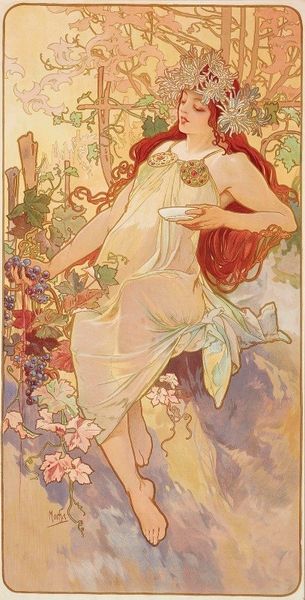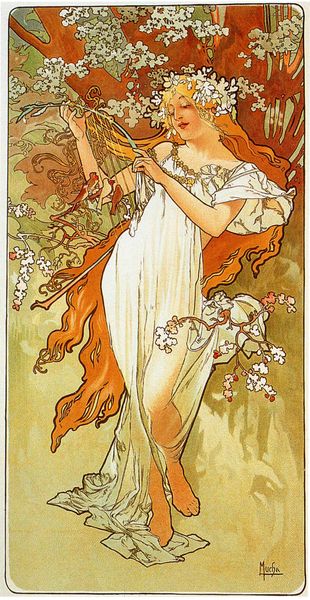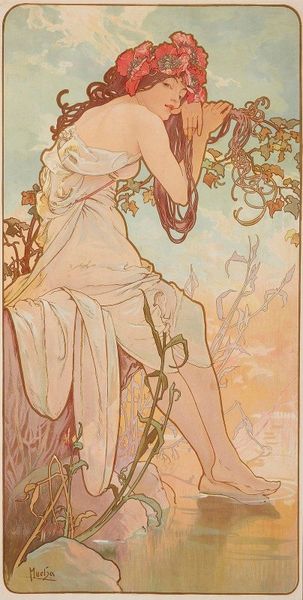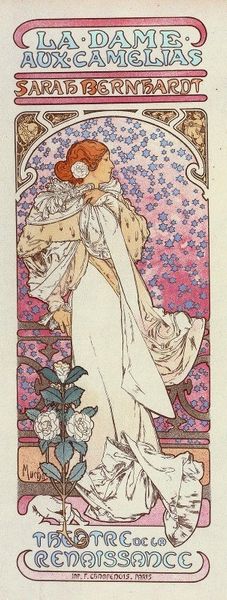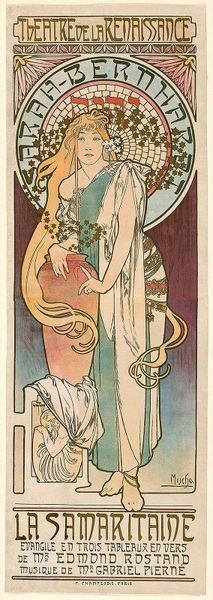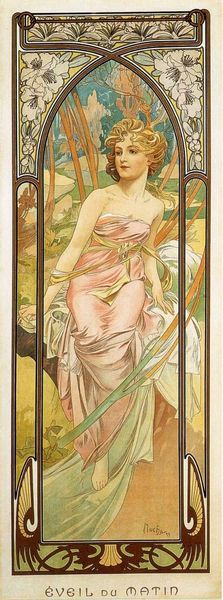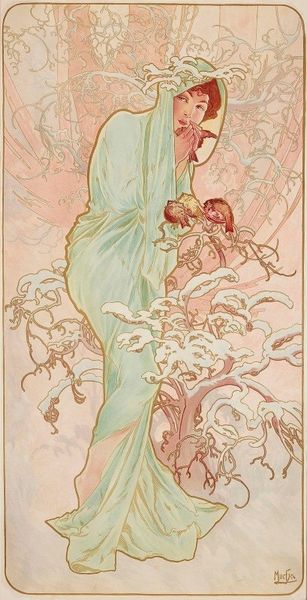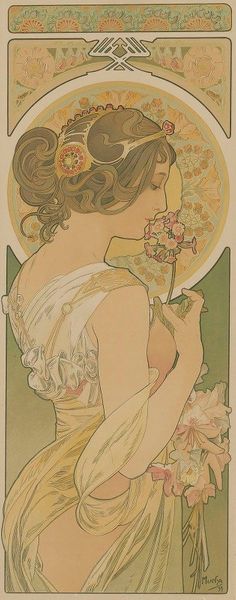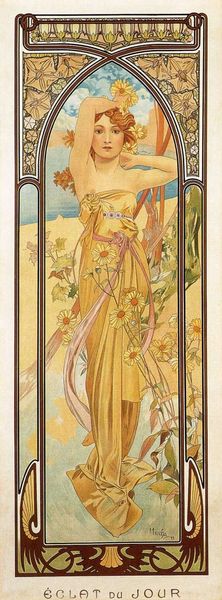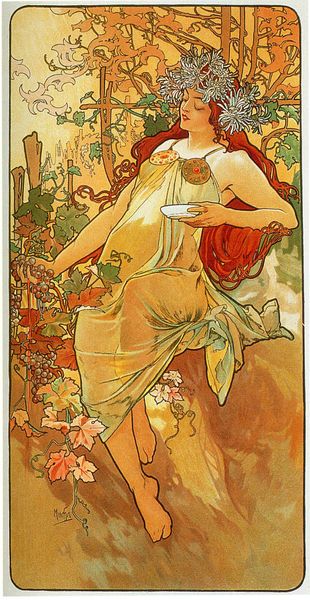
tempera, painting
#
portrait
#
art-nouveau
#
allegory
#
tempera
#
painting
#
landscape
#
figuration
#
symbolism
#
art nouveau
#
watercolour illustration
#
decorative-art
Copyright: Public Domain: Artvee
Editor: We are looking at Alphonse Mucha’s “Les Saisons 2” from 1896, rendered in tempera. It gives me a very strong sense of delicate beauty, almost dreamlike. What’s your take? How do you interpret this work, particularly considering its cultural context? Curator: What's interesting about Mucha's piece, within its time, is how it engaged with the commercial sphere, particularly through posters and advertising. Consider the context: Paris was a burgeoning center of consumer culture, and artists were increasingly navigating the space between "high" art and commercial design. Does that change how you view it? Editor: Definitely! I’d assumed this was simply a fine art painting, not necessarily commercial. Knowing that, I start to consider what message Mucha intended to send to the masses and whether there's a link between "feminine beauty" and consumerism. It definitely puts it in a whole new light. Curator: Exactly. And the decorative elements, which typify Art Nouveau, weren’t just aesthetic choices. They were about making art accessible, integrating it into everyday life through mass production. How do you see that affecting its lasting appeal? Editor: So the intent was almost democratizing art... by literally placing art into common public spaces like advertisements. Which perhaps also increased consumerism, ha. Fascinating! This conversation makes me want to re-evaluate other so-called “fine art.” Curator: Precisely. And it illustrates how artistic movements are intricately linked to broader social and economic transformations, and not always with good intention! I learned quite a bit from you.
Comments
No comments
Be the first to comment and join the conversation on the ultimate creative platform.
